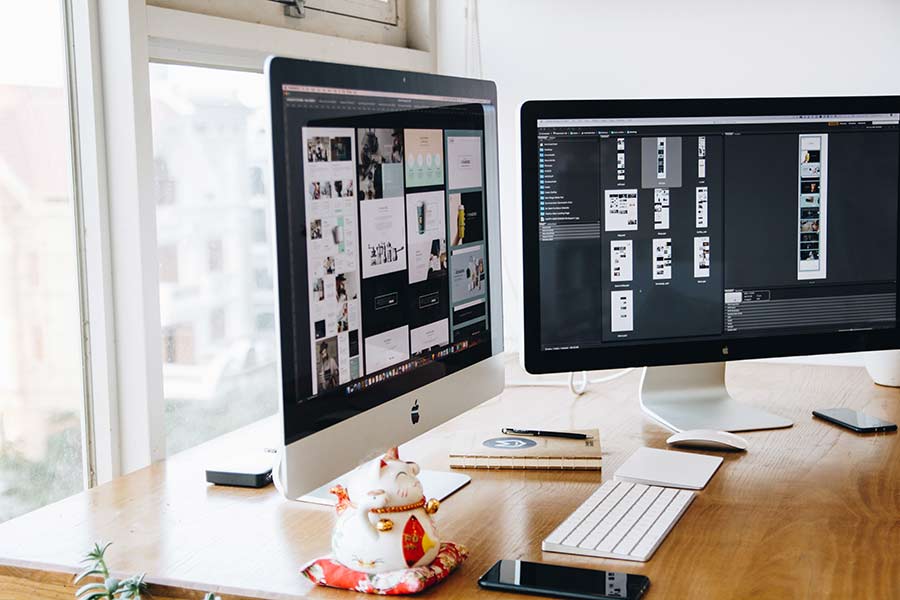
You don’t need to be an experienced web designer to build a website for your business.
There are plenty of DIY website builders out there that make it easy for anyone to build a professional-looking website in just a few clicks.
However, if you want to stand out from the crowd and impress potential customers with your site, you’ll need to go beyond the bare minimum.
Great design can make all the difference between a ho-hum website and one that stands out as an authoritative source of information on your business and its offerings.
Unfortunately, not everyone is born with innate visual design skills.
It’s something that needs practice and study – especially if you plan on designing websites as a future career or side business.
But even if you feel like you’re at a disadvantage when it comes to visual design skills, there are simple tricks and tips that can help you create the perfect website for your business.
Bring your own brand guidelines to the party
If you’re serious about your business, you’ll have a brand guidelines document that clearly outlines your design and color scheme.
And if you want your website to be consistent with your brand, you’ll want to bring those brand guidelines to the table when you start designing your site.
Even if you’re using a drag-and-drop web builder, you’re not just limited to the fonts and colors that come with the builder’s template.
Many builders allow you to select an external font, upload your own images, and even import your brand guidelines to ensure that your site looks exactly the way you want it to.

Get to know your users and their behavior
Even though your website is an important part of your business’s overall branding, it’s also a key part of lead generation.
If your site doesn’t convert visitors into paying customers, it can’t generate any revenue for your business.
So, it’s crucial that you design a website that speaks to your target audience and encourages them to take action.
If you’re starting from scratch, you can use services like Usability Hub to do user testing and find out what your potential customers want and need from your site.
You can also read up on your competitors’ websites and try to figure out what makes their sites appealing to their audience.
Use responsive design and Google’s Material Design
If you’re designing a website that’s going to be used on desktop, laptop, and mobile devices, you should use responsive design.
This will help your website look and function properly on any device that it’s being viewed on.
However, even if you’re using responsive design, it’s a good idea to also implement Google’s Material Design so that your site uses the same fonts, colors, and overall design as Google’s properties.
Don’t be afraid of color
When creating a website, many designers avoid color like the plague.
They’re afraid that adding colors to a page will make their site look cluttered and unappealing to visitors.
However, if you use the right colors in the right places, you can actually create a visually appealing website.
Choose colors that match your brand’s color scheme and use them in the right places on your site.
For example, you can use a different color for the call-to-action button on each page, or you can use color in your header to divide sections on your site.
You can even use color to create visually appealing graphs, charts, and infographics.
Find the right balance with Typography
Another way to create an aesthetically pleasing website is with the use of typography.
This is the art of selecting fonts and typefaces for your website.
You can use typography to guide your reader through your site and emphasize key points on your page.
It can also help create a more visually appealing page that appeals to the eye.
When selecting fonts for your site, you don’t have to use boring typefaces that have been used thousands of times before.
You can use fonts that are unique and have a one-of-a-kind feel. You just need to make sure that they’re easy to read and that they go with the design of your site.
Only show what your users need to see
One of the biggest mistakes that newbie web designers make is including too much content on their pages.
They want to show off their knowledge, or they want to provide an exhaustive amount of information on the page.
But this can actually do more harm than good. Most visitors don’t want to read lengthy paragraphs on your site.
They want to find what they need and be on their way. If you want your site to convert visitors, you need to make sure that you include the most important pieces of information on every page.
You should provide a brief, but detailed overview of your business, your offerings, and how you can help your customers solve their problems.
You should also make sure that you provide clear and concise contact information, so your customers know how to get in touch with you.
Bottom line
Design is often one of the most overlooked and underappreciated aspects of website development, which is unfortunate since it’s responsible for creating an initial impression on your potential customers.
Great design can make all the difference between a ho-hum website and one that stands out as an authoritative source of information on your business and its offerings.
We hope that these design tips will help you create the perfect website for your business.
CATEGORY:Website Design
